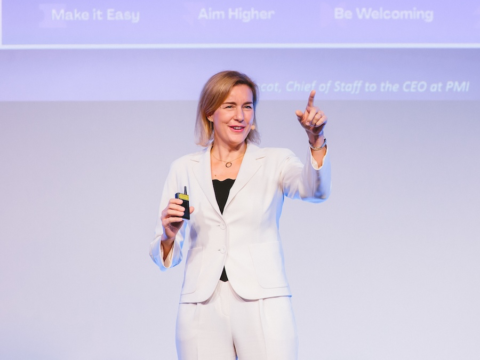Conference 2025
What if the key to delivering better project outcomes wasn’t just about mastering tools, frameworks, or methodologies – but about understanding yourself and others more deeply?
As projects grow more complex and teams more diverse, the so-called “power skills” – leadership, communication, and emotional intelligence – are proving to be the true drivers of success. But how can organizations measure these skills meaningfully and help people develop them beyond just another checklist?
Raquel Horta, Personal & Professional Development Coach and Consultant, will join the 17th annual Project, Agile & Leadership Conference to share her perspective on assessing and cultivating these essential skills. In her session, she’ll explain how to translate assessment results into impactful development plans that strengthen individuals, teams, and organizations.
To give you a glimpse into her approach, we asked Raquel how she measures power skills, why they matter more than ever, and how they create tangible value for projects and businesses alike.
1. Why do you believe power skills like leadership and communication are becoming more critical than ever for project success — especially in today’s fast-changing environment?
In today’s dynamic environment, technical skills alone are not enough. Projects are more complex, teams are increasingly diverse and remote, and stakeholders demand greater transparency and value. Power skills are what hold everything together. They enable project managers to build trust, navigate uncertainty, resolve conflicts, and inspire action; all of which are essential for delivering successful outcomes in the face of constant change.
2. What are some of the most effective tools or methods you’ve used to assess leadership competencies in a measurable way?
I’ve found that the combination of trait-based and behavior-based assessments are particularly effective. They offer a well-rounded view of a leader’s impact from multiple perspectives (peers, direct reports, and stakeholders).
Additionally, using leadership frameworks with defined competencies (such as emotional intelligence, strategic thinking, or influence) provides a clear structure for evaluating behaviors and setting measurable goals. In my programs, I also use self-assessment tools to promote reflection and accountability, which is often the starting point for real growth.
3. Once a leadership assessment is done, how can organizations ensure the results lead to meaningful development plans rather than just another report?
The key is to embed the assessment results into a practical development plan that is specific, supported, and followed up. This means setting targeted goals aligned with the individual’s role and the organization’s strategy, pairing the person with a coach or mentor, and regularly revisiting the plan to track progress.
Development should be integrated into day-to-day work, not treated as a separate initiative. It’s also essential to involve managers to ensure accountability and support.
4. Can you share a real-world example where measuring power skills led to visible improvements — either in individual performance, team dynamics, or business outcomes?
Let me share a personal example. Years ago, while working for a company deeply invested in leadership development, I took part in a leadership assessment. It included both self-evaluation and feedback from peers and stakeholders. The results were eye-opening: while everyone agreed that my strengths were being results-oriented and people-focused, the order differed. I saw myself as a people-first leader. But others perceived me as someone who prioritized results above all.
That small shift in perspective had a big impact. It made me pause, reflect, and consciously pay more attention to how I was showing up for others. I began to lean into connection and empathy with greater intention, making space for others’ voices and focusing on how I built relationships and not just what I delivered. Over time, that awareness led to stronger team dynamics and deeper trust, without compromising performance. Measuring power skills gave me a mirror and a moment that changed how I lead.
5. Many training programs lack clear metrics for success. What advice would you give to organizations that want to define and prove the ROI of leadership development efforts from the start?
Start by linking leadership development to business outcomes. Define what success looks like. Whether it’s improved employee engagement, faster project delivery, better stakeholder satisfaction, or reduced turnover. Use baseline assessments, set specific behavioral goals, and track progress over time.
ROI is not always a direct financial number, but it can be measured through qualitative and quantitative indicators. Most importantly, leadership development must be connected to strategy; when it’s seen as an enabler of performance, the value becomes clear.


